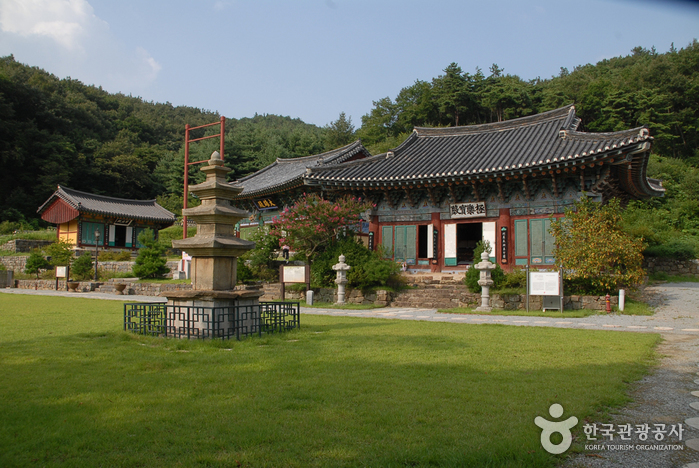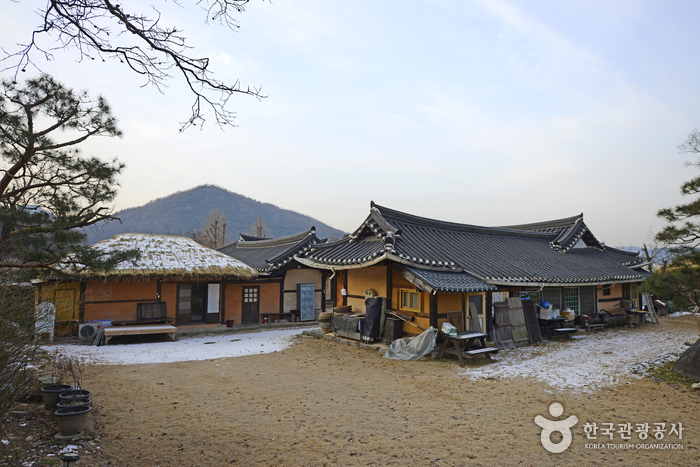E-Mart - Asan Branch [Tax Refund Shop] (이마트 아산)
17.8 Km 0 2024-04-22
1678, Oncheon-daero, Asan-si, Chungcheongnam-do
-
Himart - Asan Terminal Branch [Tax Refund Shop] (하이마트 아산터미널점)
18.1 Km 0 2024-04-18
5, Mojong-ro, Asan-si, Chungcheongnam-do
-
Mokhwa Banjeom (Asan) [목화반점(아산)]
18.1 Km 28231 2024-02-21
7-3, Onju-gil 26beon-gil, Asan-si, Chungcheongnam-do
Mokhwa Banjeom is a Chinese restaurant in Asan enjoying a loyal following. Its expertise is evident in the popularity of customers’ favorites such as tangsuyuk (deep-fried pork with sweet and sour sauce), jjajangmyeon (black bean sauce noodles), and jjamppong (spicy seafood noodle soup). Many people visit this restaurant, so waiting is the norm. Mokhwa Banjeom’s signature dish is tangsuyuk (deep-fried pork with sweet and sour sauce), made with egg batter for a rich, crispy, yet fluffy texture.
Lotte Himart - Asan Terminal Branch [Tax Refund Shop] (롯데하이마트 아산터미널점)
18.3 Km 0 2024-04-18
225, Beonyeong-ro, Asan-si, Chungcheongnam-do
-
Lotte Mart - Asan Terminal Branch [Tax Refund Shop] (롯데마트 아산터미널점)
18.3 Km 0 2024-04-16
225, Beonyeong-ro, Asan-si, Chungcheongnam-do
-
Olive Young - Asan Terminal Branch [Tax Refund Shop] (올리브영 아산터미널)
18.4 Km 0 2024-04-18
216, Beonyeong-ro, Asan-si, Chungcheongnam-do
-
Sejong Singwangsa Temple (신광사 (세종))
18.5 Km 7054 2023-04-07
24, Togolgogae-gil, Sejong-si
+82-44-865-5601
Singwangsa Temple is located on Nojeoksan Mountain. It is estimated to have been built 160 years ago, and renovated in 1920 by head monk Lee Gyeong-jik. The temple, originally called Togoljeol or Suryangsa, was renamed Singwangsa by monk Hyewon in 1980. Visitors will discover that this temple is filled with youthful energy. Although the temple has a short history, its location near Hongik University Sejong Campus has helped the temple become popular among college students.
SAPO [Tax Refund Shop] (SAPO)
18.9 Km 0 2024-04-16
11, Cheongun-ro 112beon-gil, Asan-si, Chungcheongnam-do
-
Biamsa Temple - Sejong (비암사(세종))
19.1 Km 15366 2020-04-02
137, Biamsa-gil, Sejong-si
+82-44-863-0230
The origin of Biamsa Temple is unknown, but the temple's architectural features suggest that it was built during the mid Goryeo dynasty period (918-1392). The Geungnakbojeon Hall and the three-storied pagoda inside the temple have been designated as Cultural Properties of Chungcheongnam-do Province. The flamboyang and delicately crafted datjip (canopy) inside the Geungnakbojeon Hall was restored in 1657 during the 8th year of King Hyojong's reign.
In the yard in front of the Geungnakbojeon Hall stands the three meter-high Samcheungseoktap (three-storied stone pagoda). With the discovery of Samyeongunsang stone statues near the top of the pagoda, Biamsa Temple became more widely known to the public. Among the stone statues, Gyeyumyeongjeonssi-amitabul-samjonseoksang (three Buddha statues) has been named as National Treasure No. 106, and Gichukmyeong-amitayeorae-jebulbosalseoksang (statue of Amitabha bodhisattva) and Mireukbosal-bangaseoksang (statue of Maitreya bodhisattva) have been designated as National Treasures No. 367 and No. 368, respectively. The stone statues are preserved in National Museum of Korea. Meanwhile, the three-storied stone pagoda was designated as Tangible Cultural Property No. 119 of Chungcheongnam-do Province on July 19, 1985.
Pungduck House
19.1 Km 1100 2021-04-09
20-17, Oeamminsok-gil, Songak-myeon, Asan-si, Chungcheongnam-do
+82-41-541-0023
Pungduck Old House is located in Oeam Folk Village. The name “Pungduck (or Pungdeok)” comes from the penname of Lee Taekju, the seventh-generation descendant of historical figure Lee Sajong who earned the penname “Pungdeok” while serving as the Governor of Pungdeok-gun, Gwanghae-do. The old house is “ㅁ”-shaped, with “ㄴ”-shaped building and “ㄱ”-shaped building right over it. Behind the main building is a knoll that serves as a wall of the house. Detached buildings called “sarangchae” and “byeolchae” are used as a guesthouse where guests can experience an old traditional Korean house. The "sarangchae" with area of 40㎡ has two rooms, one living room, a kitchen, and a bathroom. There is a toenmaru (narrow wooden porch running along the outside of a room). The “byeolchae” has a large spacious room, a kitchen, and a bathroom. There is a low wooden bench called “pyeongsang” in front of the “sarangchae” and “byeolchae.” Pungduck Old House is also well-known for its traditional red chili paste, so it offers a Traditional Red Chili Paste Class where participants can buy or make their own red chili paste, soybean paste, and grain syrup using traditional recipes. There is a fee for participating in the class, so make a reservation when booking.
![E-Mart - Asan Branch [Tax Refund Shop] (이마트 아산)](http://tong.visitkorea.or.kr/cms/resource/05/2883305_image2_1.jpg)
![Himart - Asan Terminal Branch [Tax Refund Shop] (하이마트 아산터미널점)](http://tong.visitkorea.or.kr/cms/resource/02/2883302_image2_1.jpg)
![Mokhwa Banjeom (Asan) [목화반점(아산)]](http://tong.visitkorea.or.kr/cms/resource/99/3050399_image2_1.jpg)
![Lotte Himart - Asan Terminal Branch [Tax Refund Shop] (롯데하이마트 아산터미널점)](http://tong.visitkorea.or.kr/cms/resource/98/2883298_image2_1.jpg)

![Olive Young - Asan Terminal Branch [Tax Refund Shop] (올리브영 아산터미널)](http://tong.visitkorea.or.kr/cms/resource/94/2883294_image2_1.jpg)
![SAPO [Tax Refund Shop] (SAPO)](http://tong.visitkorea.or.kr/cms/resource/90/2883290_image2_1.jpg)


 English
English
 한국어
한국어 日本語
日本語 中文(简体)
中文(简体) Deutsch
Deutsch Français
Français Español
Español Русский
Русский